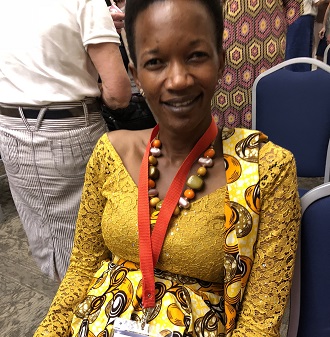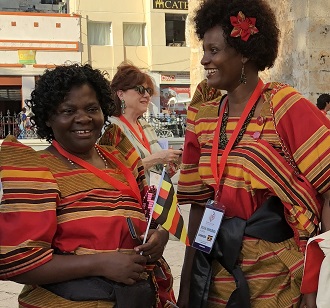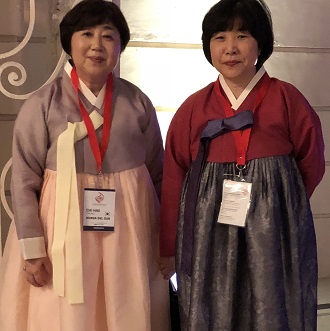Who are they ?

WHO ARE THEY ?
Testifying to the extraordinary expansion of the Society of the Sacred Heart, the AMASC today federates 37 national associations in the world. It is through them that former members adhere to AMASC.
34 associations are full members of AMASC, which gives their presidents the right to represent them and vote on their behalf at its General Assembly. 3 associations have a special situation and are simple “friends of the AMASC”, because they have not yet officially asked to join: Lebanon, the Philippines and Puerto Rico.
Four associations, Costa Rica, Hungary, the Netherlands and Brasil ( reported with 2 • on the map) resigned to the AMASC Board of Directors.
Each national association has its own mode of operation, justified by its history or culture, which gives rise to contrasting configurations:
- Some associations have only a few dozen members, sometimes distributed in many areas such as Brazil, while others, on the contrary, number several hundred such as Japan (600), or thousands such as Spain (about 4,000) or the United States-Canada (40,000). ), for these last 3, a significant proportion of members are under 40 years old (19 000 in the US!).
- In some countries, there are no longer Sacred Heart schools for a long time, as in the Netherlands, Germany or Brazil, which poses the problem of renewing their alumni associations. Conversely, there are still many schools in the United States (25), Spain (17), and there is even a Sacred Heart University in Japan.
- Moreover, when a school has its own alumni association, it is not necessarily attached to the national association of its country. This is the case, for example, in France, where schools are home to nearly 8,000 young people, or in Great Britain where they have nearly 4,000.schools.
- Finally, in general, nuns are no longer present in their schools. But when they live near or within these institutions, links are created more easily with students or teachers, promoting their feeling of belonging to the same family of the Sacred Heart. This is the case in Austria, Spain, Egypt, Ireland …
The activities of local associations are also very diverse.
In addition to the traditional meetings on the occasion of friendship days, sporting or cultural meetings, the celebration parties for Mater or St Sophie Barat, the commitments of the alumni in their associations often testify of their generosity.
- In Spain, for example, there is a fund to help old people in difficulty.
- In Ireland, a Residence Sophie Barat welcomes former retirees in individual bungalows.
- In Argentina, the former opened and financed a school for children from a disadvantaged neighborhood of Buenos Aires: Villa Garden.
- The old Japanese, in connection with their schools, support the work of the rscj in the Philippines.
- The Egyptians organize charity activities for the benefit of communities in Upper Egypt and subsidize a school of handicapped children in Heliopolis.
- The rscj of Haiti are helped by the Americans.
- The spiritual center of Joigny, located in the house of the founder of the Sacred Heart, receives donations from the French …
Finally, as soon as they can, many old are often at heart to show their gratitude to the rscj by returning them visit their retirement homes or offer them their services …
To exchange with each other, share their experiences and get to know each other better, many of these national associations have the habit of meeting during continental meetings in the interval between World Congresses.




